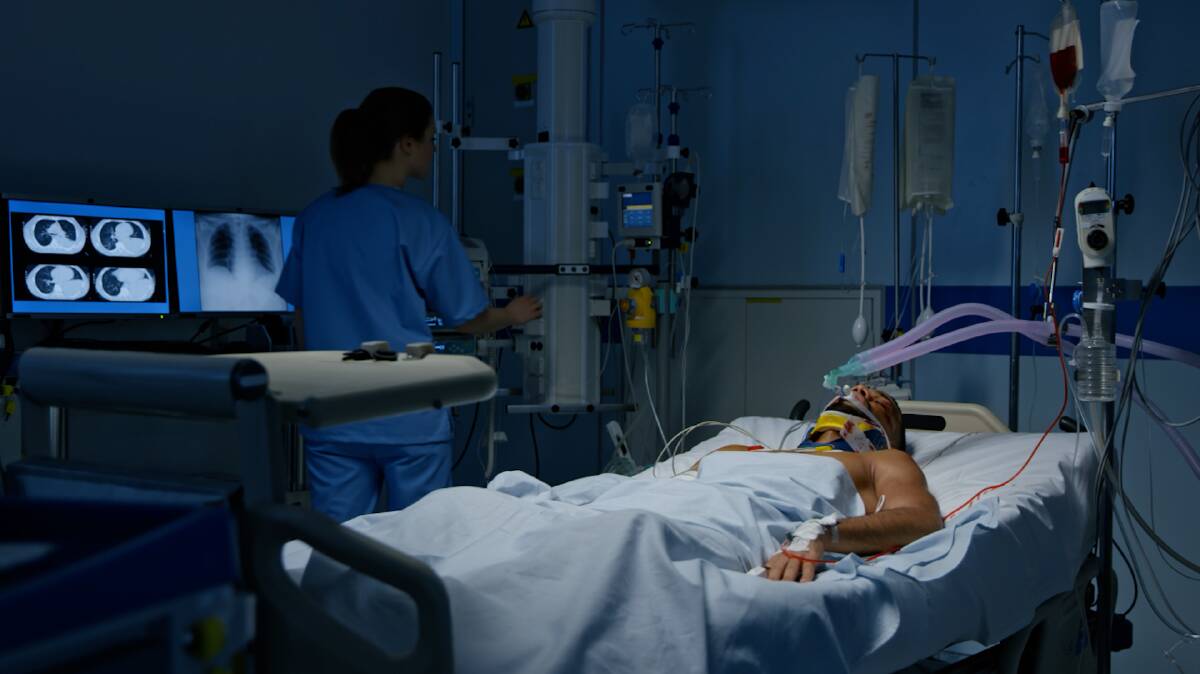Since the Omicron and BA.2 subvariants of COVID-19 began to emerge in November 2021, cases of the virus and hospitalisations have increased exponentially.
On the face of it, the numbers seem to suggest that vaccinated people are over-represented among those with severe disease requiring hospital treatment.
But looking at the presentation numbers alone does not always show the accurate story.
ACM spoke to infectious diseases physician and microbiologist from the University of Queensland, Associate Professor Paul Griffin, to understand how best to interpret the data in its context.
At the time of publication, Australia sat just shy of having vaccinated 95 per cent of its eligible population.
That now means that just four per cent are unvaccinated or not yet full vaccinated.
Related:
In light of the fact that an overwhelming majority of people are vaccinated against COVID-19, Professor Griffin said, it is not surprising to see the data indicating that a lot of people in hospital have had two doses of a vaccine.
"The reason why we see vaccinated people still admitted to hospital, we need to remember that the majority of the population is now vaccinated," Professor Griffin said.
"So it may appear that the bulk of the people that are in hospital are actually fully vaccinated, but the key thing is that the consequences of each of those infections is still far less because those people are vaccinated."
Put simply, vaccinated people may make up higher numbers in hospital beds because they also vastly outnumber unvaccinated people in the general population. There are more vaccinated people generally.
At the time of publication, there were just over 1700 people in hospital with COVID-19 across Australia, and a little over 100 in intensive care units.
After a jump in hospitalisations yesterday, NSW is now making up the vast majority of active hospital cases.
A thousand of the nation's hospitalised cases, and 38 of its ICU presentations are in NSW.
The vaccination status of each of these cases is not publically known, but in January the NSW Health Department did release its raw data, dividing hospital presentations via their vaccination statuses.
According to that data, in NSW between November 26 and January 8, when the Omicron wave was just starting, up to 1 per cent of hospital presentations had had two doses of a vaccine.
A further 0.1 per cent of ICU cases had also had two doses.
Meanwhile people with one course of a vaccine made up 3.1 per cent of hospital presentations and 0.5 per cent of ICU cases.
Unvaccinated people made up 8.9 per cent of hospitalised cases and 1.5 per cent of ICU cases.
Based on those numbers, in January at least, you had a 1 in 1000 chance of being admitted to ICU if you were double vaccinated.
But you had a 15 in 1000 chance of ending up in ICU if you were unvaccinated.
Similarly, in January the Northern Territory government revealed that unvaccinated people made up half of the ICU numbers, despite not nearly coming close to representing half of the general population.
In Queensland over the same timeframe, unvaccinated people were making up 30 per cent of the total deaths with COVID-19, yet unvaccinated people only made up about 8 per cent of the population.
Again, in Victoria in January, unvaccinated people made up 22.8 per cent of all people in hospital, and 35.8 per cent of the ICU. This despite unvaccinated people only making up 6 per cent of the population in Victoria at the time.
So, when those numbers are put into their context against the general population, it gives a clearer picture of how over-represented unvaccinated people are in hospital beds.
"We know our case numbers fluctuate on a day to day basis, on a week to week basis for many reasons," said Professor Griffin.
"Some of that will be how much testing is being done. Some are going to be changes in people's behaviour, the relaxation of of mask rules and social distancing, and even the seasons might play a bit of a part in that."

The jump in hospital presentations yesterday has led experts to warn that a further strain to the health system could occur as the nation heads into winter.
"As we move into winter, we might see an increase in cases," said Professor Griffin.
"The increasing numbers of BA.2, that subvariant of Omicron, has highlighted once again what this virus is going to keep doing. It's going to keep changing, adapting, evolving.
"It is clear that BA.2 is more infectious than BA.1 (Omicron) somewhere in the vicinity of 30, maybe even up to 50 per cent more infectious. Nothing like the change we saw from Delta to Omicron, of course, but it is more infectious."
The incoming flu season may merge with the rise in new variants of the COVID-19 virus, including the Omicron and BA.2 subvariant.
"Prior to COVID, our winter flu surge put a significant demand on the health care systems and we're not expecting flu to be huge this year necessarily," Professor Griffin said.
"But we do have perhaps one of the most vulnerable populations for flu that we've had in some time, given our rates of infection over the last few years was so low as our measures to combat COVID were very effective against flu and also because our vaccine focused so much on COVID, vaccination rates for flu are down.
"So if we don't address that, if we don't get a high rate of protection in the community against flu from vaccination, it could be quite significant and even modest numbers of flu with the rate of COVID we have now together it is going to put a big demand on our health care system.
"So once again, highlighting the importance of vaccination for both viruses so that we can keep the impact of both to a minimum when they're circulating together."


